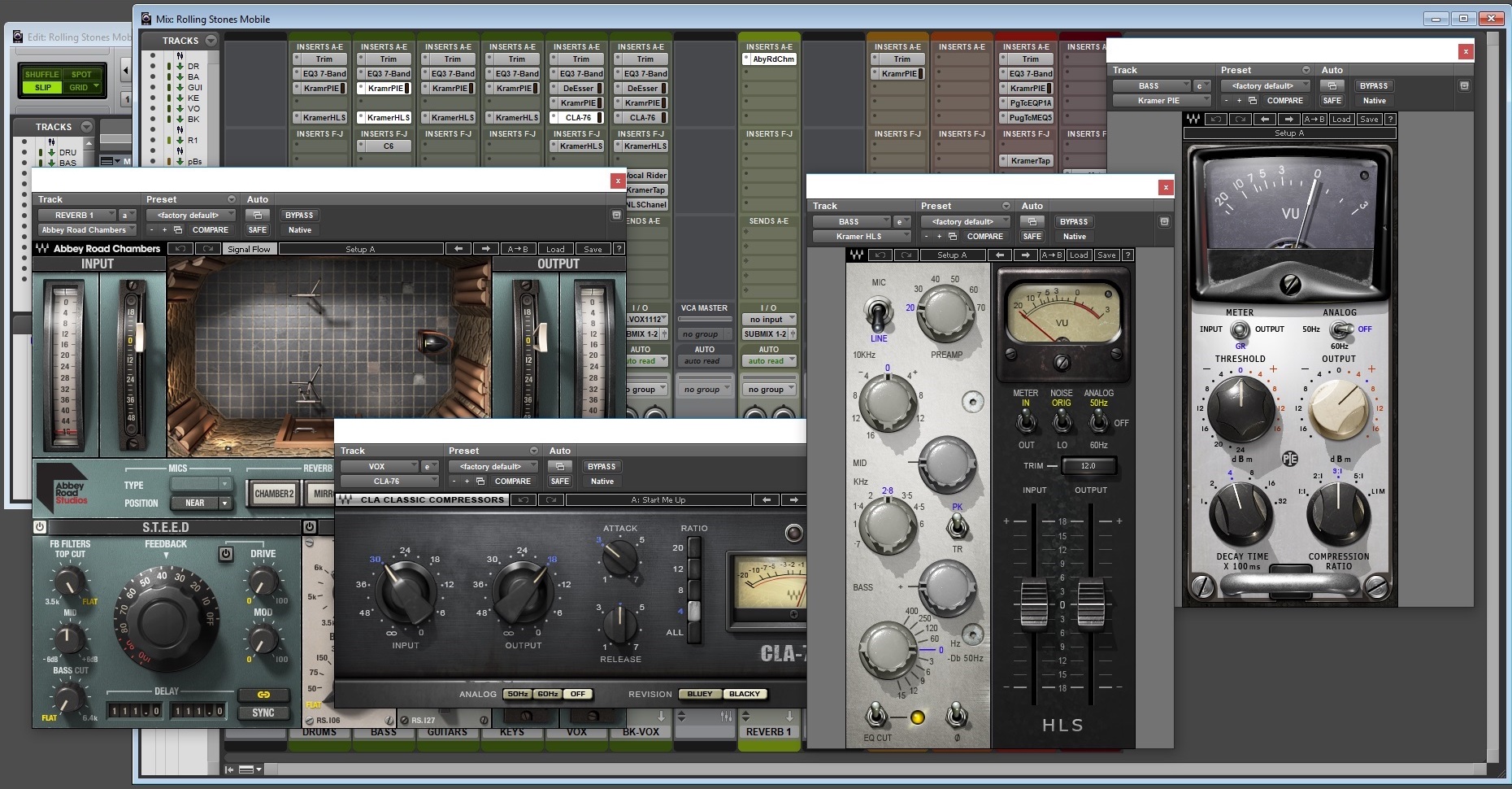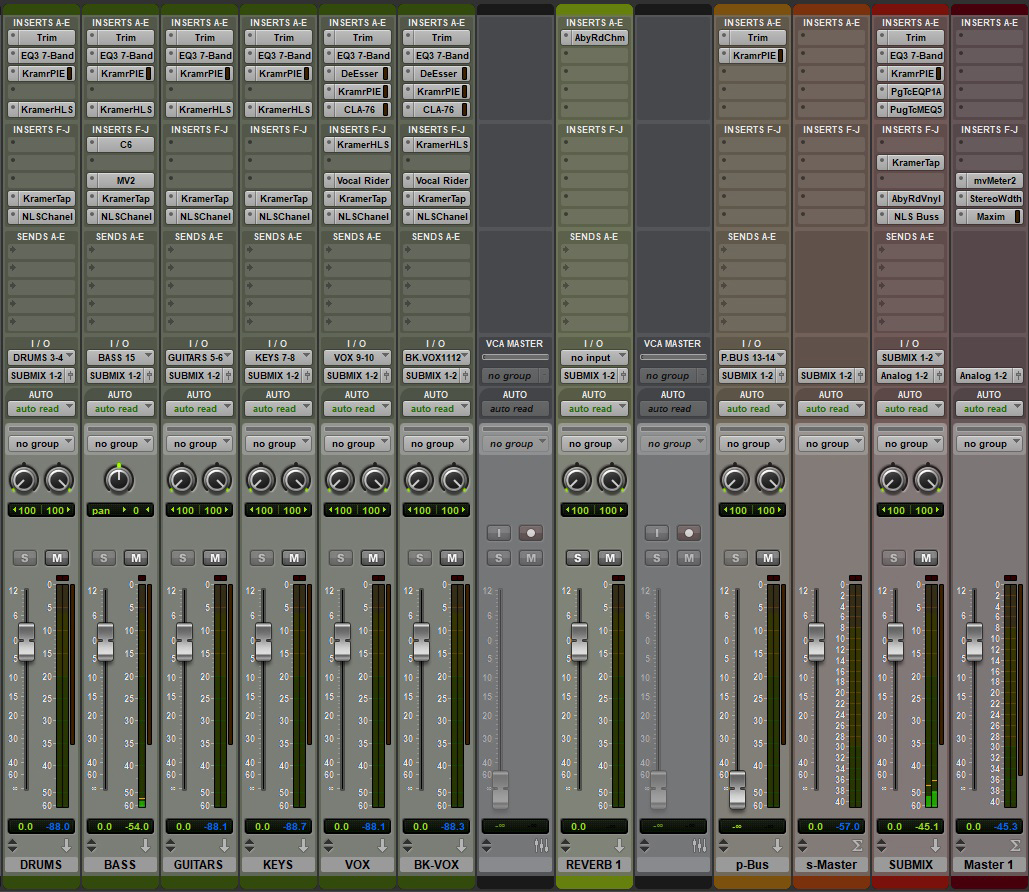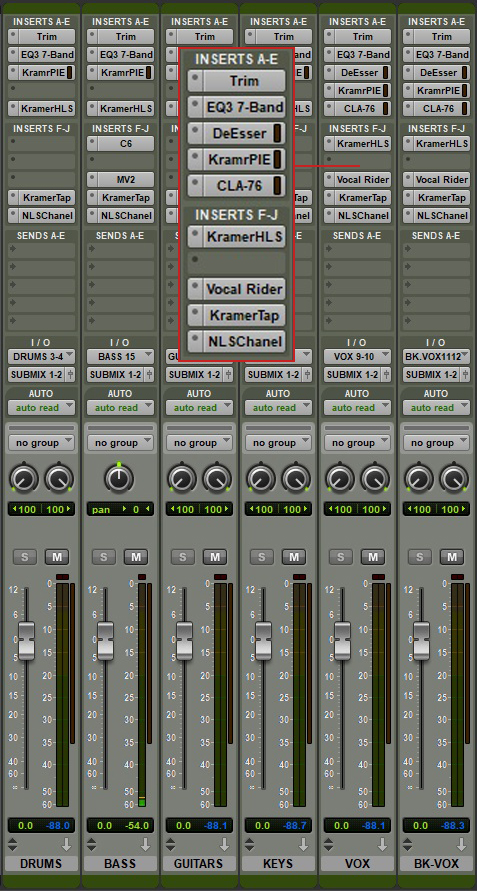Analog Thinking: Recreating Classic Studios in Your DAW
I love analog emulation plugins for my DAW. Compressors, limiters, EQs, channel strips, summing consoles, reverbs, all sorts of classic outboard gear—I love it all.
While these plugins can be used on their own to color the sound of any recording, one of my favorite things to do with them is to combine them, configuring my own templates of classic studio setups. There’s nothing like going into a mix with a sonic template to start from. We all do it: there’s a picture in our head of where we want to take a song, based on the music we love. That music was created in a particular studio, with a particular configuration of gear. Using a modern DAW and plugins to get to that starting point helps you get immediately closer to the sound you’re seeking.
There are any number of routes you can take with this approach. Maybe you want to start with a generic British studio of the 1980s for your big rock production. Or you could go even earlier and recreate one of EMI’s studios from the 60s. How about The Rolling Stones’ legendary mobile studio? With a handful of plugins, you can work in any one of these environments, virtually speaking.
The concept here is to give yourself a starting point in a mix by modeling your signal chains based on the gear that would have been available in those classic studios and vintage environments.
Where to Start
The first step is to really research the studio you’re interested in recreating. There’s lots of information online, as well as books like Howard Massey’s The Great British Recording Studios to start from. Make a note of the consoles, EQs, compressors, and other gear they had in play. Then, see if there are plugin emulations of them. As often as not, there are!
Off the top of my head, there are SSL, Neve, Helios, Trident, MCI channel strips and console emulations available. Recreations of classic EQs abound, as do compressors. These are the meat and potatoes tools of every studio. Add some EMT plates, chamber impulse responses, spring reverbs, tape emulations and delays, and you’ve pretty much got it all covered.
Create a Template
My preferred method in putting this approach to work is to create a template. In it, I set up auxiliary channels for my grouped sounds (guitars, drums, vocals, etc.), submix (main stereo bus), and master fader. Then, I build my studio. Other than the room itself (which I can’t build!), a studio is going to have a console and some outboard gear. These are the ingredients that analog emulations have covered really well.
Say that I’ve got a swampy, Stones-y rocker that I’ve been asked to mix. The studio I build in that case is very straightforward. My “Rolling Stones Mobile” studio, as reflected in a plugin chain would look like this:
Group Buses:
• A basic parametric EQ (for clean-up of nasty tones)
• Kramer Helios EQ emulation (Waves)
• Kramer PIE Pye compressor emulation (Waves)
• Kramer tape emulation, Ampex 350 and 351 (Waves)
I might also add a Pultec EQ emulation (lots of options to choose from here) if I need something that the Helios EQ can’t give me.
Stereo Mix:
• Kramer PIE Pye compressor emulation (Waves)
• Kramer tape emulation, Ampex 350 and 351 (Waves)
It’s that simple. With just a handful of plugins, I’ve got my own version of the Rolling Stones Mobile setup. And better yet, I’m instantly in the right zone for the kind of mix I’ve been asked to work on. Taking this philosophy a step further, let’s say I’d be taking the virtual “tapes” back to a virtual version Olympic Studios to mix. In that case, I simply augment the above with tools I know that studio had in play, like a UREI 1176 emulation, and a spring reverb (theirs was an AKG BX20). Now I’m recording with the Rolling Stones mobile rig and mixing at the legendary Olympic Studios. How cool is that?
Want to cut your disc at Abbey Road? There’s a plugin for that too. For my own uses, I’ve recreated and made templates for all the EMI studios, Olympic Studios, the Rolling Stones Mobile, some SSL E- and G-based studios of the 80s, Neve-based studios—all of them giving me a solid launching point to bring my clients the kind of tone and attitude they are looking for.
Make It Your Own
Using simple plugin chains, you can model the sound of great studios of the 1950s on to the present where literally thousands of hit songs have been created. Doing this can give you framework that gets you in the pocket with your mix, but you by no means have to stop there. Hybrid-it-up and add your own favorite twist, just like you’re the studio owner bringing in a new piece of gear. Recreating classic studios in your DAW is a fun exercise and a great learning experience that results in some instantly great tonal options that you can revisit again and again. Give it a try and see if you don’t agree.
Jerry Hammack is the author of the four-book series, The Beatles Recording Reference Manuals.
He has worked as a musician, producer, recording and mix engineer since the 1980s, and is currently focused on mix engineering. A dual US and Canadian citizen, he makes his home in Toronto, Ontario, Canada.
Learn more about Jerry and his work at http://www.beatlesrecordingreferencemanuals.com and http://www.jerryhammack.com
Please note: When you buy products through links on this page, we may earn an affiliate commission.









